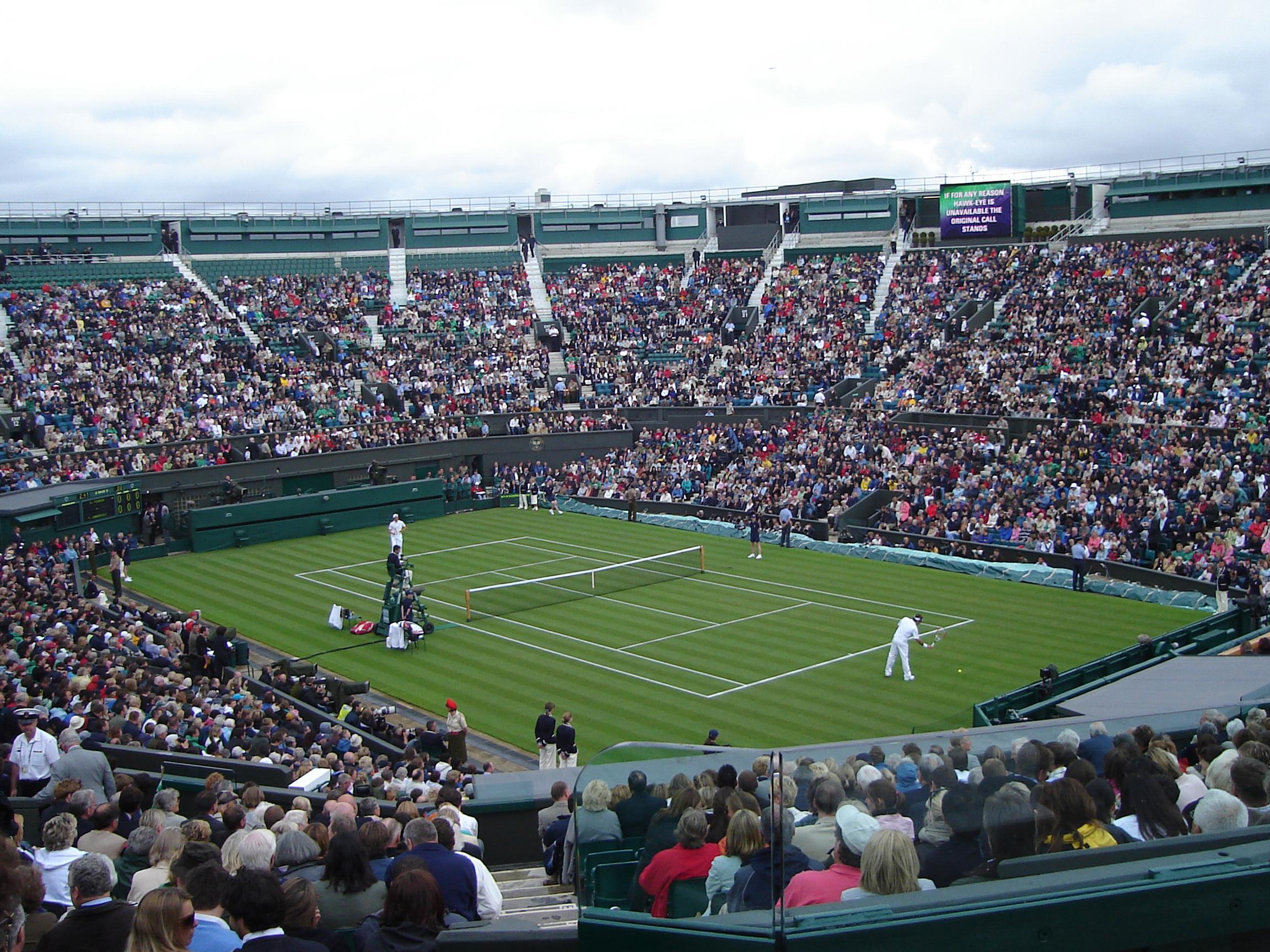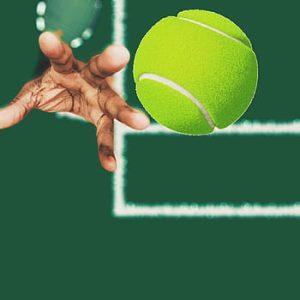We may earn money or products from the companies mentioned in this post.
Introduction

Tennis, with its rich history and global popularity, has given rise to numerous tournaments that captivate both players and fans alike From the prestigious Grand Slam events to smaller regional competitions, these tournaments provide a platform for showcasing exceptional athleticism and fierce competition Understanding the different classifications of tennis tournaments is crucial for players, organizers, and enthusiasts in order to appreciate the significance and unique characteristics of each event
Brief History of Tennis Tournaments
Tennis tournaments have been a part of the sport’s fabric since its inception in the late 19th century The first recorded tournament took place in 1877 at Wimbledon, England, marking the birth of modern competitive tennis As the sport gained popularity across continents, more tournaments emerged to satisfy the growing demand for high-stakes matches
Over time, tennis evolved from an amateur pastime into a professional sport This transition led to the establishment of various governing bodies such as the International Tennis Federation (ITF), which aimed to standardize rules and regulations while promoting fair play across all levels of competition
Explanation of the Term “Open”
The term “Open” in tennis refers to tournaments that are open to both amateurs and professionals Historically, many tennis events were restricted only to amateur players due to societal norms and regulations surrounding professionalism in sports However, with changing times and a shift towards embracing professionalism in tennis, Open tournaments became more prevalent
Open tournaments offer opportunities for aspiring players from all backgrounds to compete against top-ranked professionals on an equal footing This inclusivity not only enhances diversity within the game but also ensures that talent can flourish regardless of social status or previous experience
Importance of Understanding Tournament Classifications
Understanding tournament classifications is essential for various stakeholders in the tennis community For players, knowing the classification of a tournament helps them strategize and prepare accordingly Each tournament category comes with its own level of competition, prize money, and ranking points distribution
Organizers benefit from understanding tournament classifications as well, as it allows them to plan and execute events that align with their objectives Whether it’s hosting a prestigious Grand Slam or organizing a local grassroots tournament, knowledge of classifications ensures that the right standards and expectations are met
For enthusiasts and fans, comprehending the classifications adds depth to their appreciation of the game It enables them to follow specific tournaments they find most captivating while also providing insights into the significance attached to each event within the larger tennis landscape
Overall, understanding tournament classifications in tennis is crucial for both participants and observers alike By recognizing the historical context behind these competitions, grasping the concept of “Open” tournaments, and appreciating their importance in different contexts, we can fully embrace the diversity and excitement that tennis offers at every level of play
Evolution of Open Tennis Tournaments

Tennis has a rich history, and its tournaments have evolved over the years One significant milestone in this evolution is the shift from the amateur era to the open era Let’s explore how this transformation took place
Amateur Era in Tennis History
In the early days of tennis, major championships were exclusively reserved for amateurs These prestigious events attracted players from around the world who competed purely for the love of the game and without any financial incentives
During this period, professional players were excluded from participating in top-tier tournaments, despite their exceptional skills and contributions to the sport This divide between amateurs and professionals created a distinct division within tennis
The Advent of Open Era in Tennis (1968)
The open era in tennis began in 1968 when the International Lawn Tennis Federation (ILTF) made a groundbreaking decision They decided to allow both amateurs and professionals to compete together on equal terms, marking a significant shift in the landscape of tennis
The first official Open tournament was held at Bournemouth, known as the British Hard Court Championships This event set a precedent for future competitions by welcoming all players, regardless of their amateur or professional status
This move towards inclusivity transformed tennis by allowing talented professionals to showcase their skills alongside amateur players on a global stage It opened doors for new rivalries, exciting matchups, and ultimately elevated the overall level of competition within the sport
Characteristics and Significance of Open Tournaments

Open tournaments in tennis are unique events that bring together both amateur and professional players from around the world These tournaments offer a level playing field for all participants, regardless of their skill level or ranking Let’s explore the characteristics and significance of open tournaments in more detail:
Open to Both Amateur and Professional Players
One of the defining features of open tournaments is their inclusivity Unlike invitation-only events, open tournaments welcome players from all backgrounds, providing an opportunity for individuals to showcase their talent on a global stage By allowing amateurs to compete against professionals, these tournaments foster increased competition and create a richer talent pool
-
Increased Competition and Talent Pool:
Open tournaments pit players of various skill levels against each other, leading to fierce competition on the court This heightened level of competition pushes athletes to perform at their best and helps raise the overall standard of play within the sport -
Opportunities for Rising Stars:
Open tournaments serve as platforms for emerging talents to make their mark in the tennis world Young up-and-coming players can use these events as stepping stones to gain recognition, attract sponsors, and potentially secure lucrative professional contracts
Grand Slam Events as Opens
The most prestigious open tournaments in tennis are known as Grand Slam events These include Wimbledon, French Open (Roland Garros), US Open, and Australian Open While they share many characteristics with other open tournaments, Grand Slam events hold particular significance due to their historical importance and impact on player rankings
-
Role in Determining World Rankings:
Performances at Grand Slam events significantly influence player rankings within the Association of Tennis Professionals (ATP) and Women’s Tennis Association (WTA). Success in these tournaments can propel a player to the top of the rankings, establishing them as one of the best in the world -
Prize Money Distribution:
Grand Slam events offer substantial prize money, attracting top players from all corners of the globe The distribution of prize money is carefully structured to reward winners while ensuring fair compensation for all participants This financial incentive further adds to the significance and allure of these open tournaments
Categories Within Open Tournaments
Within open tournaments, there are different categories that cater to players at various stages of their careers These categories provide players with opportunities to compete against opponents who are at a similar skill level or developmental stage
-
Association of Tennis Professionals (ATP) Tour and Women’s Tennis Association (WTA) Tour Events:
These events form the backbone of professional tennis, attracting top-ranked players from around the world They offer a rigorous competition schedule and significant ranking points, allowing players to climb up the global rankings ladder -
Challenger and Futures/ITF Circuit:
These lower-tier events provide aspiring professionals with a chance to gain valuable experience and earn crucial ranking points Players on this circuit often face tough competition as they strive to progress through the ranks and qualify for higher-level tournaments
In conclusion, open tournaments play a vital role in shaping tennis as both an inclusive sport and highly competitive industry By bringing together players from diverse backgrounds, these tournaments create thrilling matchups while providing opportunities for talented individuals to shine Whether it’s Grand Slam events or lower-tier competitions, open tournaments hold immense significance in determining player rankings, distributing prize money, and nurturing the growth of tennis at all levels
Conclusion

In conclusion, this article has explored the various aspects of open tournaments and their significance in the growth and development of tennis We have discussed the advantages of open tournaments over closed ones, highlighting how they provide opportunities for players of all levels to compete on a global stage Open tournaments also foster diversity and inclusivity within the sport, attracting a wide range of participants from different backgrounds
We have also delved into the impact that open tournaments have on player development By exposing players to different playing styles and competition levels, open tournaments offer invaluable experience that helps them refine their skills and strategies Furthermore, these tournaments enable aspiring players to gain exposure and recognition, opening doors for potential sponsorships and professional opportunities
The accessibility of open tournaments is another crucial aspect we have discussed Unlike closed tournaments that often require qualification or invitations, open tournaments allow any player who meets certain criteria to participate This inclusivity not only promotes fairness but also provides an avenue for talented players who may not have access to elite training programs or resources
Lastly, we have examined how open tournaments contribute to the overall growth and popularity of tennis as a sport These events attract a large audience worldwide, generating widespread interest and engagement among fans The excitement surrounding high-level matches in open tournaments helps build anticipation, creates rivalries, and fuels enthusiasm among tennis enthusiasts
In summary, open tournaments play a vital role in shaping the landscape of tennis by providing equal opportunities for players at all levels while promoting diversity and inclusivity within the sport They serve as stepping stones for aspiring athletes to showcase their talents on a global platform while contributing to the overall growth and popularity of tennis
Useful Links

What is the meaning of ‘Open Era’ in tennis?
Why Is Tennis Tournaments Called Open?
What is the Open Era in Tennis?
Tennis | Grand Slams | Australian Open
Tournament History
US Open 101: a USOpen.org guide to how tennis works.
Forget Calendar Slam, ‘Surface Slam’ Almost as Rare
Grand Slam tennis tournaments
Why was the tennis tournament in Australia called ‘The Open’?
About the tournament
Tennis FAQs
Origins, The Open Era and Grand Slam History
U.S. Open | History, Winners, & Facts
BNP Paribas Open | Indian Wells
At the U.S. Open, line judges are out. Automated calls are in
US Open Tennis History – TicketCity Insider
Adult Tournament Info
Cincinnati Open Tournament Guide | The Tennis Tribe
U.S. Open (tennis)






